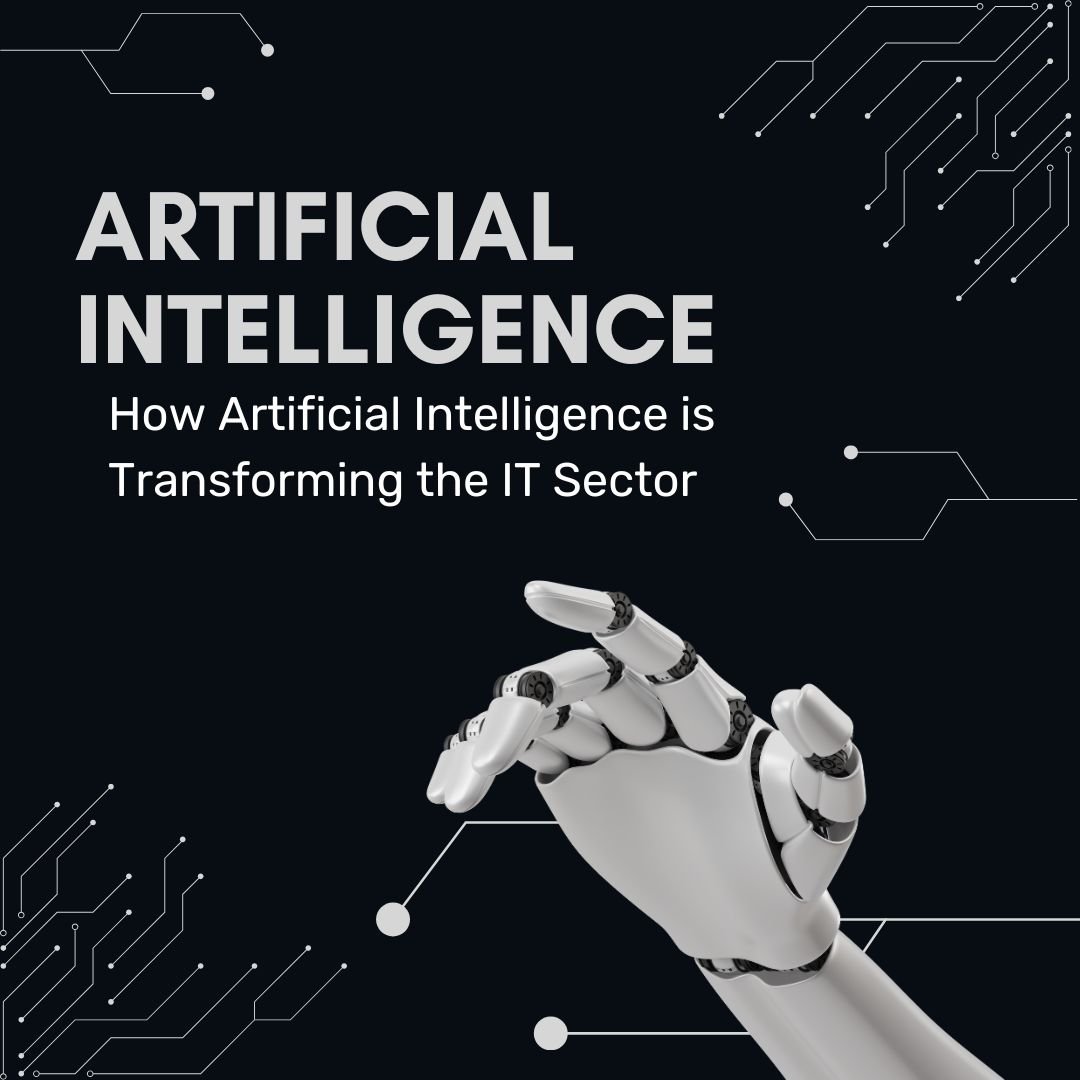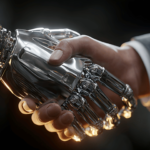How Artificial Intelligence is Transforming the IT Sector
Problem: The Pressure on IT Has Never Been Greater
Every business now relies on technology. That means IT teams are under constant pressure to keep systems running, secure data, support users, develop apps, manage infrastructure, and somehow also innovate.
But here’s the catch: most IT departments are understaffed and overwhelmed. Manual tasks, like system monitoring, patching, troubleshooting, or even managing helpdesk tickets, consume hours of valuable time every day. As systems scale and complexity grows, the margin for error gets thinner.
The stakes? Downtime, security breaches, and wasted resources.
According to a 2023 Gartner survey, over 70% of CIOs reported that their IT departments were “not keeping up” with business demands. It’s not a question of will — it’s a matter of bandwidth.
Now enter Artificial Intelligence (AI), not as a hype machine, but as a practical toolkit to help IT teams do more with less.
Agitation: Manual IT Operations Are No Longer Sustainable
Let’s take a real-world example.
Case Study: Vodafone
Vodafone, the global telecom giant, was drowning in IT service tickets. On average, they received around 1.7 million IT-related requests per year, and nearly 70% were repetitive — password resets, account unlocks, basic troubleshooting.
Their IT support teams were burning out. The result? Delays, inconsistent service, and high operational costs.
Multiply this scenario across thousands of companies globally, and the trend is clear: traditional IT operations are becoming unscalable.
Other challenges include:
- Security threats that evolve faster than humans can track
- Downtime from slow incident response
- Development delays due to inefficient code testing and deployment
- Talent shortages in areas like DevOps, cybersecurity, and cloud architecture
And here’s the twist: while AI is creating demand for new IT skills, it’s also becoming the exact thing that helps close the skills gap.
Solution: How AI Is Actually Changing the Game in IT
Let’s break this down by key areas in IT — and show exactly how AI is transforming each.
1. AI in IT Service Management (ITSM)
AI-powered chatbots and virtual agents are handling L1 support in many organizations, freeing up IT teams to focus on complex problems.
What This Looks Like in Practice:
Vodafone, from our earlier example, deployed an AI-powered digital assistant named “TOBi.” It now handles over 60% of IT service requests autonomously.
Results:
- 45% reduction in ticket volume to human agents
- 30% faster issue resolution
- Improved employee satisfaction across departments
TOBi can reset passwords, walk users through software installs, and even raise tickets when needed — all without human help.
2. AI in Cybersecurity
The average business faces over 1000 cyber threats per day. AI helps by automating threat detection, prediction, and response.
Real Data:
IBM’s “Cost of a Data Breach Report 2023” showed that companies using AI-driven security solutions saved an average of $1.76 million per breach compared to those that didn’t.
AI tools like Darktrace use machine learning to spot abnormal behavior — like a user logging in from two different countries within minutes — and take instant action.
Security teams don’t have to dig through thousands of alerts manually. AI does the heavy lifting, filters out false positives, and even recommends next steps.
3. AI in Infrastructure Monitoring
System outages cost U.S. businesses more than 700 billion annually, according to IDC.
AI-driven observability tools now predict and prevent outages by monitoring logs, server performance, and network traffic in real time.
Use Case: AIOps in Action
AIOps (Artificial Intelligence for IT Operations) tools like Dynatrace and Splunk use predictive analytics to identify anomalies before they impact users.
One U.S.-based financial services firm cut downtime by 42% within six months of deploying an AIOps solution. Server resource spikes that used to take hours to identify are now flagged in minutes — or entirely prevented.
4. AI in Software Development
Developers now use AI coding assistants like GitHub Copilot, Tabnine, and Amazon CodeWhisperer to speed up development.
AI can suggest entire code blocks, detect bugs, recommend improvements, and even help write unit tests — all in real-time.
Result:
According to GitHub’s 2023 research, developers using Copilot coded 55% faster, with a significant increase in accuracy and fewer bugs during testing.
Instead of writing boilerplate code or googling syntax, developers focus on architecture, logic, and innovation.
5. AI in DevOps and CI/CD
AI is making Continuous Integration/Continuous Deployment (CI/CD) pipelines smarter and faster.
It helps by:
- Predicting build failures
- Recommending fixes
- Automatically rolling back buggy deployments
Real-World Example:
At Atlassian, AI was embedded into the Jira pipeline to predict ticket resolution times and flag potential blockers before they became critical.
Result? A 23% increase in sprint delivery accuracy over 9 months.
6. AI in Cloud Resource Optimization
Cloud waste — unused or underutilized resources — costs companies billions.
AI tools now analyze usage patterns and recommend scaling, shutdowns, or rightsizing of cloud instances.
What This Solves:
One Fortune 500 company saved $6.3 million annually by using AI to optimize AWS instances across its 1,200+ applications. Previously, they had over-provisioned resources “just in case.” AI replaced guesswork with data-driven precision.
7. AI for IT Hiring and Training
AI is also entering the HR side of IT, helping:
- Screen resumes faster
- Match job requirements to skill sets
- Identify gaps in employee skills and suggest training
Platforms like Eightfold AI and Pymetrics use AI to reduce hiring time and bias.
Some firms now use AI simulations to train junior IT staff in complex environments like Kubernetes, without risking live systems.
The Business Impact: AI in IT Isn’t Just Technical — It’s Strategic
When AI takes over repetitive, manual tasks in IT, here’s what really happens:
- Faster delivery: Products ship quicker
- Reduced costs: Teams do more without hiring more
- Higher resilience: Systems stay up and secure
- Better employee satisfaction: Less burnout, more focus on strategic work
And perhaps most importantly: IT becomes a business enabler — not just a support function.
This is why over 80% of enterprises are already piloting or using AI in IT operations, according to Deloitte’s 2024 Tech Trends report.
Challenges: It’s Not All Smooth Sailing
Of course, adopting AI in IT doesn’t happen without friction. Here are a few real challenges companies face:
- Data Silos
- AI models need large, clean, connected datasets. IT teams often have data scattered across tools and departments.
- Skill Gaps
- IT professionals need to upskill in AI/ML basics, data engineering, and new tools.
- Overreliance on AI
- Blind trust in automation can lead to missed issues. Human oversight remains essential.
- Security Risks
- AI models can be exploited or poisoned if not monitored. This is a growing area of concern.
- Tool Fatigue
- The explosion of AI-based tools leads to fragmented ecosystems. Integration becomes a challenge.
But these hurdles are addressable — and often minor compared to the benefits.
The Human Side: IT Jobs Aren’t Going Away — They’re Changing
Some worry AI will replace IT jobs. That’s not what’s happening.
Instead, AI is automating tasks, not roles. The future IT pro will be:
- More strategic: solving business problems, not just fixing tech
- More data-savvy: working closely with data scientists and engineers
- More agile: managing complex, AI-augmented systems
In fact, the World Economic Forum predicts that AI will create 97 million new roles globally by 2025 — many of them in IT-related fields.
The takeaway? IT professionals who embrace AI now will be in high demand later.
Future Outlook: What’s Next for AI in IT?
Looking ahead, we’ll see:
- Self-healing infrastructure: systems that fix themselves in real-time
- AI-driven IT governance: enforcing compliance, policy, and security automatically
- Conversational IT: natural language interfaces replacing dashboards
- Explainable AI (XAI): making AI decisions understandable to humans
- Full-stack observability powered by LLMs: natural-language querying of logs, metrics, and traces
The next frontier is collaborative AI, where humans and AI co-manage IT systems. Think of it like a highly skilled co-pilot — not an autopilot.
Final Thoughts: Adapt or Get Left Behind
AI is no longer a side project or a tech experiment. In IT, it’s becoming mission-critical.
Teams that embrace AI:
- Spend less time firefighting
- Deliver value faster
- Operate with fewer errors
- Lead their industries in resilience and innovation
The transformation is real. It’s happening now. And it’s not about robots replacing humans — it’s about humans being freed to do what they do best: solve, build, and lead.
If you’re in IT, the question isn’t whether AI will transform your role — it’s whether you’ll drive the change or be driven by it.
Want to Get Started?
Here’s a quick action plan:
- Audit repetitive tasks in your IT ops
- Identify 1–2 AI tools for automation or monitoring
- Upskill your team in AI basics (free Coursera/edX courses available)
- Run a pilot project with a clear metric (e.g., reduce incident response time by 30%)
- Track, refine, expand
The future of IT isn’t just about tech stacks — it’s about smarter, AI-augmented ecosystems built by people who understand both the tools and the transformation






